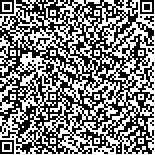牛锋、陈碧琴、费强峰、冯桂英、汤红萍.高压氧对脑损伤小鼠脑组织的保护作用及其对沉默信息调节因子1表达的影响[J].中华物理医学与康复杂志,2016,38(5):335-339
扫码阅读全文

|
| 高压氧对脑损伤小鼠脑组织的保护作用及其对沉默信息调节因子1表达的影响 |
|
| |
| DOI: |
| 中文关键词: 高压氧 创伤性脑损伤 小鼠 沉默信息调节因子1 |
| 英文关键词: Hyperbaric oxygen Brain injury Silent information regulator 1 |
| 基金项目:上海市金山区科学技术创新项目(2013-3-16) |
|
| 摘要点击次数: 5181 |
| 全文下载次数: 5863 |
| 中文摘要: |
| 目的 探索高压氧(HBO)对创伤性脑损伤(TBI)小鼠脑组织的保护作用及其调控内源性神经保护因子沉默信息调节因子1(SIRT1)的作用。 方法 将60只昆明小鼠按随机数字表法分为对照组、TBI组和HBO治疗组,每组20例。将TBI组和HBO治疗组小鼠进行重物下落击打法建立闭合性脑损伤模型,对照组仅制作假手术模型(即仅切开小鼠头皮后去除骨窗而不致脑损伤)。HBO治疗组小鼠在击打后1h开始进行HBO治疗,HBO治疗方案为先纯氧洗舱10min,使舱内氧浓度达90%以上,然后匀速加压20min,至0.25MPa(2.5TAT),稳压吸氧60min,最后匀速减压20min出舱,每日2次,共持续5d,治疗10次。对照组和TBI组小鼠置于高压舱内仅以空气通风,不给予HBO治疗。分别于创伤后1h及创伤后第1~5天,对各组小鼠进行神经功能缺损(NSS)评分;分离脑组织进行氯化三苯基四氮唑(TTC)染色计算脑梗死面积,分离培养小鼠皮质神经元进行细胞免疫荧光和免疫印迹法检测SIRT1的表达情况。 结果 ①TBI组和HBO治疗组小鼠在创伤后1h的NSS评分差异无统计学意义(P>0.05)。创伤后,TBI组小鼠的行为能力、平衡和警觉性等显著下降,伤后第1天,NSS评分上升为(8.55±1.24)分,随后2~5d,TBI组小鼠NSS评分逐渐下降,至创伤后第5天NSS评分为(4.06±0.54)分;而HBO治疗组小鼠NSS评分在开始治疗后显著低于TBI组,至创伤后第5天NSS评分下降至(2.11±0.43)分,且与TBI组同时间点比较,差异均有统计学意义(P<0.05)。②创伤后第2天TBI组和HBO治疗组小鼠的脑梗死率分别为(27.60±2.34)%和(24.60±2.34)%,明显高于对照组[(1.83±0.12)%],且与对照组比较,差异均有统计学意义(P<0.01);HBO治疗组小鼠在创伤后1h开始接受HBO治疗,随着时间的推移,脑梗死面积开始逐渐减少,至创伤后第5天,脑梗死面积减少至(9.58±1.22)%,与TBI组同时间点[(28.50±2.82)%]比较,差异有统计学意义(P<0.01)。③免疫印迹法检测显示,TBI组小鼠的脑内SIRT1表达显著下降至(48.70±9.20)%,与对照组比较,差异有统计学意义(P<0.01);而HBO治疗组小鼠经5d的HBO治疗后,SIRT1蛋白表达恢复至(80.6±15.2)%,与TBI组比较,差异有统计学意义(P<0.05)。 结论 HBO治疗TBI小鼠可以明显增强小鼠脑内SIRT1的表达,显著降低TBI小鼠的NSS评分和脑梗死面积。 |
| 英文摘要: |
| Objective To explore any protective effect of hyperbaric oxygen in traumatic brain injury and its effect on the expression of silent information regulator 1 (SIRT1). Methods Sixty mice were randomly divided into a control group (n=20), a brain injury group (TBI, n=20) and a hyperbaric oxygen therapy group (TBI+HBO, n=20). The mice in the TBI and TBI + HBO groups were given massive blows to establish closed brain injuries, while in the control group the scalp was incised and a bone window was removed without brain damage. The mice in the TBI + HBO group were given hyperbaric oxygen treatment twice per day for five days, while those in the TBI and control groups were put in the hyperbaric chamber but not given HBO treatment. At one hour after the trauma and on 5 days afterward, the neurological functioning of the mice was measured to generate neurological severity scores. Brain tissue was resected for triphenyl tetrazolium staining to measure the infarct area. Cortical neurons were isolated to evaluate the SIRT1 expression using immunofluorescence and Western blotting. Results No significant difference in the average NSS score was observed between the TBI and TBI+HBO groups one hour after modeling. The average NSS score in the TBI group subsequently increased and then decreased gradually until the fifth day. The average NSS score of the TBI+HBO group was significantly lower than that of the TBI group after the onset of the treatment at the different time points, decreasing to (2.11±0.43) on the 5thday compared with (4.06±0.54) in the TBI+HBO group. On the 2nd day after the trauma, the cerebral infarction areas of the TBI and TBI+HBO groups were significantly larger than in the control group. During the treatment, the infarction area of the TBI+HBO group decreased gradually until on the 5th day it was significantly smaller than that of the TBI group. Traumatic brain injury significantly down-regulated SIRT1 protein compared with the control group, but the hyperbaric oxygen therapy significantly increased the expression of SIRT1 compared with the TBI group. Conclusion Hyperbaric oxygen therapy can significantly relieve traumatic brain injury, reducing NSS scores and the infarcted area and enhancing SIRT1 expression, at least in mice. |
|
查看全文
查看/发表评论 下载PDF阅读器 |
| 关闭 |